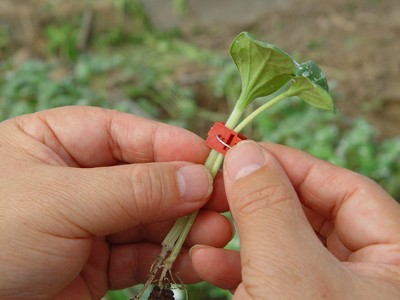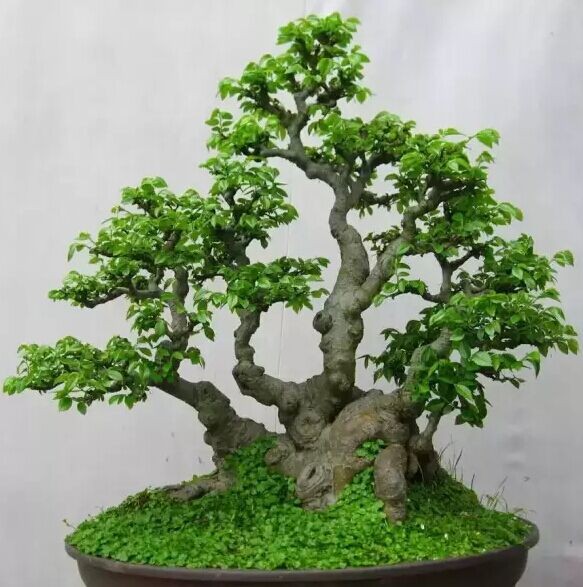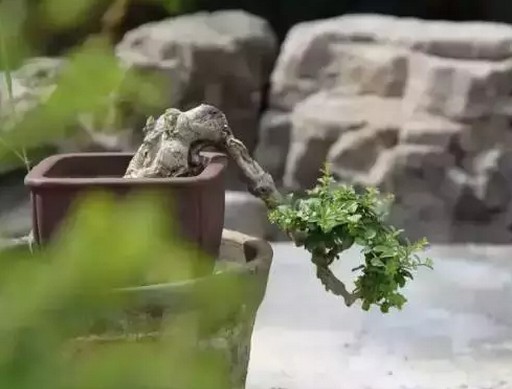Cutting Seedling technique of potted Osmanthus fragrans
Osmanthus fragrans are ornamental flowers and fragrant trees which are special products of our country. They are evergreen all the year round, blossom in autumn and fragrant. This film comprehensively introduces the cultivation techniques of sweet-scented osmanthus trees to you from the aspects of growth characteristics, environmental requirements, variety selection, cutting seedling technology, seedling management, young and adult tree management, sweet-scented osmanthus harvest and so on.

Sweet-scented osmanthus is one of the top ten rare tree species in China, but there are few seeds of sweet-scented osmanthus, so the reproduction of sweet-scented osmanthus has always been a difficult problem. The application of cutting seedling raising technology of sweet-scented osmanthus has solved this problem and made the mass propagation of sweet-scented osmanthus trees possible. This film introduces you to the techniques of sweet-scented osmanthus cutting: preparation before cutting, cutting methods, management of seedling stage and management of seedling stage.
The characteristics and application of sweet-scented osmanthus, the cultivation history and producing area distribution of sweet-scented osmanthus, the morphological, biological and ecological characteristics of sweet-scented osmanthus, the excellent varieties of sweet-scented osmanthus, the general cultivation management and pest control techniques of sweet-scented osmanthus, the cultivation techniques of picking flowers, green ornamental and potted sweet-scented osmanthus, the transplanting techniques of sweet-scented osmanthus trees, the planning and construction of special garden of sweet-scented osmanthus, and the appreciation of sweet-scented osmanthus.
Sweet-scented osmanthus tree is loved by many people because of its unique fragrance. It can be seen everywhere in city parks, residential areas and campuses. It is a widely used tree species in gardens. The following editor will introduce the seedling cultivation of potted sweet-scented osmanthus. Osmanthus fragrans are generally raised by cutting, and single-stem sweet-scented osmanthus is often raised by sowing, which is introduced as follows:
1. Osmanthus fragrans blossomed from September to October, and the fruit matured from late March to late April the following year. When the fruit enters the ripening stage and the pericarp changes from green to purplish black gradually, it can be collected. The collected fruits were piled up for about 3 days. After the peel was softened, the pericarp was soaked and scrubbed, the peel and pulp were removed, and the pure seeds were obtained and slightly dried and moist. Because sweet-scented osmanthus seeds have post-ripening period, it usually takes 8 months for sweet-scented osmanthus seeds to germinate.
2. The method of sowing and raising seedlings is commonly used. A large number of sweet-scented osmanthus seedlings can be obtained by sowing and raising seedlings, which is suitable to be used as street trees. Sowing commonly used wide strip sowing, row spacing of 20 to 25 cm, width of 10 to 12 cm, 20 kg per mu of sowing, per mu of sweet-scented osmanthus seedlings 2.5 to 30,000. Before sowing, put the navel to one side, cover one or two centimeters of fine soil, cover with a thin layer of straw, and spray water until the soil is soaked to prevent soil consolidation and reduce water evaporation. When the seeds germinated and unearthed, uncover the grass in time and put the grass between the rows, which can not only keep the soil moist, but also prevent the growth of weeds.
Time: 2019-06-13 Click:
- Prev

Pruning of elm bonsai
Deciduous trees, up to 25 m tall and 1 m DBH, growing into shrubs in dry land; young trees with smooth, grayish brown or grayish bark, dark gray, irregularly deeply lobed, rough; branchlets glabrous or hairy, yellowish gray, brownish gray or gray, light brownish yellow or yellow, with scattered lenticels
- Next

Cultivation of small trees in Landscape Bonsai-- an understanding of the method of creating trees in Nature
Bonsai starts from the saplings and is trimmed once a year, first from the basic training. With the accumulation of time, the cuttings of the trees naturally heal. According to their own needs and uses, the shape of the tree is gradually improved through continuous pruning. The young trees in the early days have no degree of aging. Due to the reasons of some tree species, such as Guijie Baila
Related
- Fuxing push coffee new agricultural production and marketing class: lack of small-scale processing plants
- Jujube rice field leisure farm deep ploughing Yilan for five years to create a space for organic food and play
- Nongyu Farm-A trial of organic papaya for brave women with advanced technology
- Four points for attention in the prevention and control of diseases and insect pests of edible fungi
- How to add nutrient solution to Edible Fungi
- Is there any good way to control edible fungus mites?
- Open Inoculation Technology of Edible Fungi
- Is there any clever way to use fertilizer for edible fungus in winter?
- What agents are used to kill the pathogens of edible fungi in the mushroom shed?
- Rapid drying of Edible Fungi

